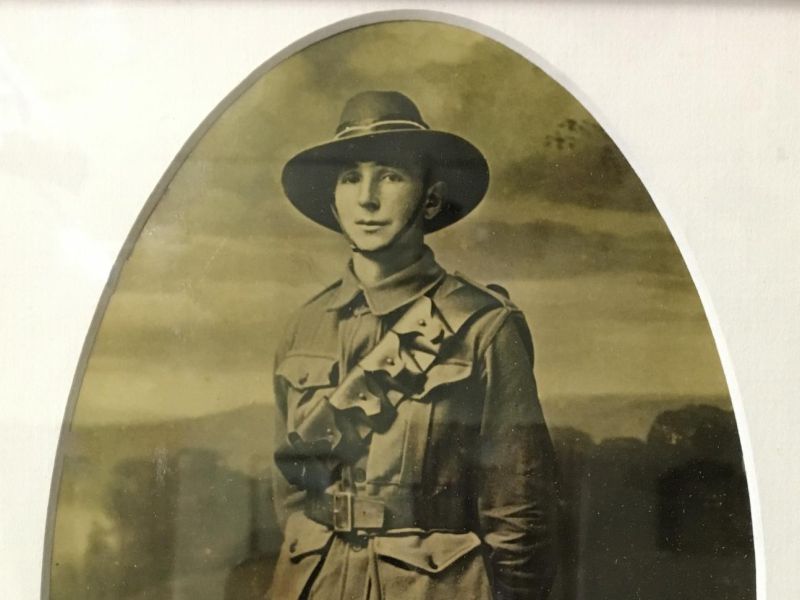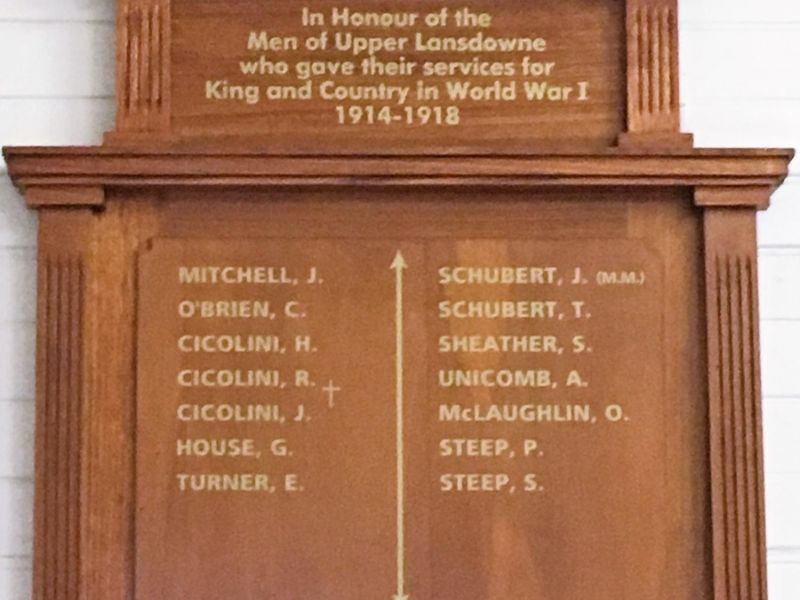The Somme France 100 year anniversary of the death of RH Cicolini WW1
To the people of Upper Lansdowne,
Only a few weeks ago on the 3rd of June 2018 I visited the war cemetery in France where my relative and a former citizen of your community Mr Raymond Horace Cicolini is buried. He lies there because of his sacrifice to defend our nation and the good people of northern France during the first world war.
The 3rd of June is a significant date as it is also the day of the death of Mr Raymond Horace Cicolini, Service number 2005 (AIF Rank Driver) one hundred years ago in the year 1918.
Raymond is buried in the Crouy British cemetery west of Amiens, the town which he and his AIF colleagues defended, under the gallant leadership of John Monash. Amiens was considered to be in many ways the last stand for the Commonwealth forces during the German spring offensive of 1918.
“If Amiens is lost, Paris would be next”
The brilliant leap-frog advance tactics by Monash would see the Germans defeated around Villers-Bretonneux and Le Hamel, which meant in time Amiens would be secure.
Today, the countryside of the Somme is so picturesque basking in the spring sunshine, lush green farmlands full of produce growing in once was fields of utter destruction and despair, 100 years ago.
As a visitor it is hard to comprehend that such an event took place, but intermittently the green pastures are halted by stone fence borders surrounding intimate grave sites of white head-stones and crosses.
I can assure you that the resting place of our magnificent war dead is a stark contrast to the place on which they stood.
Today, our found fallen lay shoulder to shoulder in the warm embrace of manicured lawns and cottage garden borders, a similar scene which would have occurred in the backyard gardens suddenly left behind by our Australian soldiers 100 years ago.
The memorials erected to our war dead stand tall and strong on the hard-fought high ground, hills so desperately coveted, the measure for human sacrifice was not yet derived.
Raymond was wounded in the early hours of May 31st, 1918, crushed and maimed by falling debris in the enormous barn he was billeted, in the town of Allonville north of Amiens.
C. E. W. Bean recounts as follows –
The Germans utilising a high velocity gun fired high explosive shells at 5-minute intervals into the village. The third or fourth shell burst in the barn bringing down one of the beams supporting the roof and causing the whole roof and part of the walls to collapse on the sleeping company.
This shell killed thirteen men and wounded 56 – the costliest shell burst in the history of the AIF.
The next shell crashed into the neighbouring barn and, exploding on the floor, killed 5 and wounded 12.
We can take comfort in the fact that Raymond’s two brothers Jack and Horace would have been with their dying brother during his last days alive, their mother Mary would have thought the same.
It is likely they held and comforted each other at the end, having made a promise to each other while in training camp that they would stick together.
We don’t know if Raymond was conscious and communicating during his final hours, but what we do know is he and his brothers had a strong Christian faith, having formed the Catholic Soldiers Guild while in camp at Liverpool NSW prior to their departure to Egypt with the 7th Light Horse Regiment. This guild is still in practice today.
Remarked one brother “that no matter where you are you’ve got somebody praying for you”.
Raymond died three days later on the 3rd of June 1918.
Raymond’s brothers John and Horace buried him in Crouy, they made an oak cross to mark his grave and inscribed a brass or copper plate to be placed on the cross. Their mother Mary would receive the plate 3 years later in 1921.
The brothers returned to Australia one year after Raymond’s death, and the good people of The Lansdowne raised funds for a marble tablet to honour the memory of Private Raymond Cicolini. The tablet was erected in the Upper Lansdowne catholic church and in time would find its current home in the local public hall.
Fourteen men left Upper Lansdowne to fight on the Western front, thirteen returned.
Today, Raymond lies in a peaceful setting high on a rise overlooking green pastures. A very respectful place. The great Cross of Sacrifice towers above him and commands respect of those who may gather.
His name is commemorated on the Roll of Honour at the Australian War Memorial, panel 181, only a few feet from the grave of the unknown soldier.
Honoured by Kings, Queens, Presidents and Prime Ministers, and by many ordinary Australians of whom he represented.
In his last moments Raymond would have been worried about his brothers, not knowing if they would survive. At the time not knowing if the bloody battles would end. End they did only 161 days later. His brothers would go on to live long lives, and his mother Mary would become a pillar of the community.
I am able to honour him one hundred years later, he had won our freedom, and many family generations have thrived due to his sacrifice.
His story will continue to be told by our children, he will never be forgotten.
Lest we forget.
Rod William Watts
Grays Point, NSW 2232

 Rod William Watts
Rod William Watts